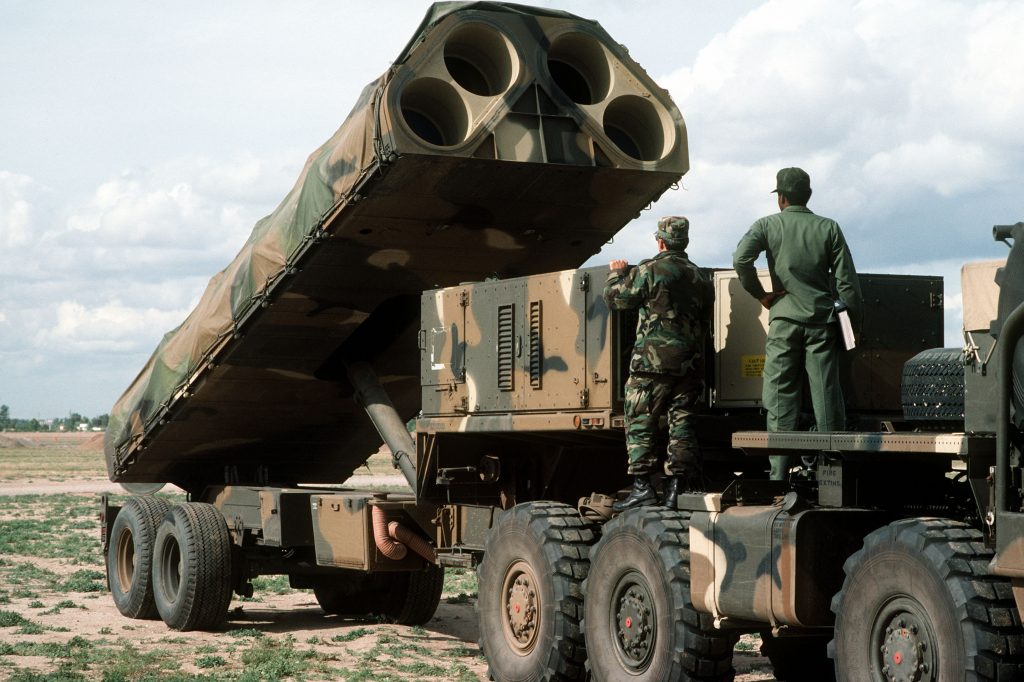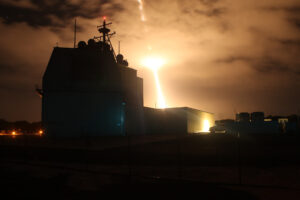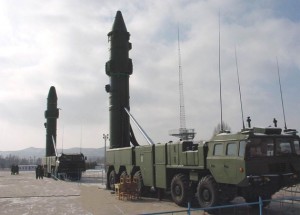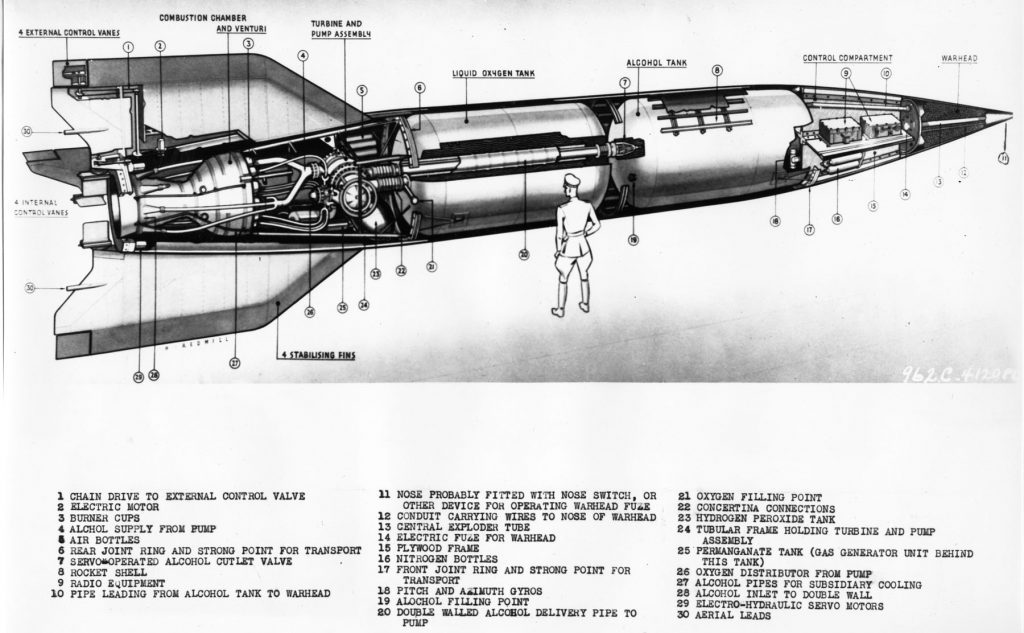
WASHINGTON: If President Trump withdraws from Reagan’s INF accord, it could jump-start fielding of new technologies that would have skirted the letter of the treaty, like ground-launched hypersonics. But it could also lead to less exotic solutions that the INF pact now bans outright, like mid-ranged ballistic missiles.
[Click here for how the Pentagon & Congress planned to pullout of INF for years]
As the product of a very particular moment in the Cold War, the misleadingly named Intermediate-Range Nuclear Forces accord actually bans all cruise and ballistic missiles — . It doesn’t matter whether they carry nuclear warheads or conventional ones — that have a range between 500 to 5,500 kilometers, about 310 to 3,417 miles….but if and only they’re launched from the land. The exact same weapon, launched from a ship, submarine, or aircraft is completely legitimate.
So what could the US military do without the treaty that it can’t do already? A congressionally mandated Pentagon report from 2013, unpublished but obtained by Breaking Defense, says that withdrawing from the treaty would create four possibilities:

“1. Modifications to existing short range or tactical weapon systems to extend range.”
While the US has plenty of sea- and air-launched weapons that were never covered by the treaty, the only existing ground-launched system that comes close to the banned ranges is the Army Tactical Missile System (ATACMS). But the Army’s already decided it’s not worth upgrading the 1980s-vintage ATACMS for a significantly longer range.
Instead, the Army’s developing an all-new Precision Strike Missile (PRSM) to hit targets out to 499 km — but officers acknowledge that’s an arbitrary limit imposed by the INF treaty, not the available technology. So, practically speaking, the end of INF would remove this restriction on the new PRSM, but not magically enable a radical enhancement of the aging ATACMS.

“2. Forward-based, ground-launched cruise missiles (GLCMs).”
This is the easiest option. In fact, the Air Force’s BGM-109G Ground-Launched Cruise Missile (GLCM) — whose deployment helped force the Soviets to the negotiating table and whose destruction the INF treaty explicitly ordered — was simply a truck-borne variant of the Navy’s standard BGM-109A Tomahawk, whose non-nuclear version is on almost every cruiser, destroyer and submarine today.
Repackaging the Tomahawk for ground launch would be even easier now than in the Cold War. That’s because the US is already installing compatible missile tubes in Poland and Romania as part of the Aegis Ashore missile defense system. While the US has repeatedly and emphatically denied Aegis Ashore has any offensive capability, Russia has repeatedly and anxiously noted that the original naval version of Aegis uses the same multi-purpose Mk 41 Vertical Launch System (VLS) to fire both defensive (surface to air) and offensive (surface to surface) missiles. Adding offensive capabilities to Aegis Ashore would probably be as simple as loading different missiles, different software, and different targeting data. It would be ironic if the Russians’ own violations of the INF drove the US to realize one of their worst fears.

“3. Forward-based, ground-launched intermediate-range ballistic missiles (IRBMs).”
The US would have to build a new IRBM, replacing the Cold War Pershing II that was destroyed under the INF accords, since nothing similar is currently in service. (The Air Force Minuteman III and Navy Polaris D5 are much longer-ranged “strategic” missiles never covered by INF). But the basic technology of ballistic missiles is old, shared not only with Minuteman and Polaris but with Werner von Braun’s 76-year-old V-2. Rocket boosters shoot a “reentry vehicle” (housing the warhead) into space at blistering speed, at which point it coasts back to earth on a parabolic trajectory so predictable Sir Isaac Newton could have calculated it with a quill pen. (The study of ballistics began with gunpowder cannons in the Renaissance).
In fact, one of the military’s main motivations for pursuing newer technologies such as hypersonics is that they allow less predictable, more maneuverable missiles — ones that could bypass today’s anti-ballistic missile defenses. One of the military’s main misgivings about the new technologies, however, is that they’re significantly more complicated than proven ballistic and cruise missile tech.
So what’s the happy medium between new and proven? That brings us to the last category, the one about which the 2013 report seems most enthused:

“4. Forward-based, ground-launched intermediate-range missiles with trajectory shaping vehicles (TSVs).”
What on earth — or rather, in space — is a TSV? It’s an advanced type of a reentry vehicle, i.e. the part of a ballistic missile that reenters the atmosphere from space, as opposed to the rocket boosters, which burn out and fall away. Specifically, a TSV is launched on a ballistic missile but has “maneuvering and glide capacities,” at least enough to hone in precisely on a target and to avoid a simple Newtonian calculation predicting its exact flight path.
It combines a ballistic rocket launch — a venerable, proven technology — with a maneuvering reentry vehicle — like the one allegedly built into the Chinese DF-21 “carrier killer.” It would be more capable than a pure ballistic missile, yet technologically simpler and less risky than hypersonics. This might be the golden mean for the mid-term, after deploying a land-based Tomahawk but before developing combat-ready hypersonics.

SOURCE: US Army. SLRC and Hypersonic Missile ranges as reported in Army Times.
Army Strategic Fires: Hypersonics & Super-Guns
The Army, Navy, and Air Force are all working on hypersonic weapons, which can fly through the air at more than five times the speed of sound. (Ballistic missiles actually go faster but in a fixed arc, and are unable to maneuver like an airplane or cruise missiles). But it’s the US Army that runs headlong into the INF treaty, which only bans ground-based weapons.
The Army says it can proceed with its planned “strategic fires” systems whatever happens to INF, because they will comply with the treaty — somehow. What the Army won’t discuss is how that’s even possible for weapons it says will have a thousand-mile range.

We can, however, engage in some informed speculation based on what the Army has disclosed. The two strategic fires systems are intended to complement each other:
One, not yet named in public, is a ground-launched hypersonic missile — high speed, high performance, and high cost — to strike the hardest targets, such as underground command bunkers.
The other, the Strategic Long-Range Cannon (SLRC), uses a scaled-up howitzer to launch slower and cheaper missiles at easier but more numerous targets — radars, missile launchers, mobile command posts. Once in flight, the munition then ignites a small built-in rocket booster to extend its range, a scaled-up version of 30-year-old Rocket Assisted Projectile (RAP) technology. The cannon-plus-small-rocket combination should be cheaper than a pure rocket, because the cannon part is reusable and rocket boosters aren’t.

It’s clear that neither of these weapons fits the INF treaty’s definition of a ballistic missile as “a missile that has a ballistic trajectory over most of its flight path.” The Army’s proposed cannon-launched projectile flies ballistically at first, but it departs from that trajectory as soon as the rocket booster kicks in. A hypersonic “boost-glide” system initially flies like an aircraft, under its own power and then, when the engine cuts out, flies like a glider (a very, very, very fast glider), which — as the Obama administration argued during New START talks — is definitely not ballistic flight.
It’s also possible that neither weapon would meet the INF treaty’s definition of a cruise missile, “an unmanned, self-propelled vehicle that sustains flight through the use of aerodynamic lift over most of its flight path.” The hypersonic missile is probably a “boost-glide” system designed to skip in and out of the upper atmosphere like a skipping stone over a pond, which is using neither a ballistic trajectory or aerodynamic lift. The cannon-launched weapon, as discussed above, alternates between ballistic and rocket-boosted flight: It’s conceivable it doesn’t spend “most of its flight path” (i.e. more than 50 percent) purely in either mode and therefore arguably qualifies neither as ballistic nor cruise.

Back To (Ballistic) Basics?
In any case, the hair-splitting technical arguments that the Army’s proposed weapons won’t violate the INF treaty may be moot in two ways. First, the Russians will never accept them. Moscow already argues that long-range armed drones — a major US advantage — violate the treaty ban on any “unmanned, self-propelled vehicle that sustains flight through the use of aerodynamic lift.” Such a broad definition of the treaty won’t leave any loopholes for the Army weapons to fly through.

Second, the US military may decide it doesn’t need them. If the US does withdraw from the INF treaty, then it doesn’t have to worry about any ban on straightforward ballistic or cruise missiles, and those are proven technologies that might be easier to build than hypersonics or cannon-launched missiles. The 2013 study specifically casts shade on hypersonics in one passage:
“Due to current INF prohibitions, specifically the definition of a ballistic missile, the Department is pursuing technology development concepts using boost-glide vehicles to achieve a greater than 50 percent non-ballistic flight profile. Without INF, the key benefit would be the ability to field a ground-launched ballistic system, such as an IRBM with a TSV. This type of system could deliver the same or better capability as a boost-glide vehicle, with potentially less technological risk and cost.”
By contrast, the 2013 study sounds unenthusiastic about a traditional ballistic missile:
“Despite high re-entry velocities, a weapon system with a purely ballistic trajectory could be susceptible to modem missile defense systems and lack the precision required to effectively strike targets with conventional munitions due to in-flight guidance errors.”
A ballistically-launched, trajectory-shaping missile would be harder to shoot down than a pure ballistic weapon, but easier to develop than a pure hypersonic weapon. It would be, as the report says, simply “an evolution of an IRBM” rather than radically new technology. Even if the US ultimately decides to pursue hypersonics and super-cannon, the IRBM-plus-TSV combination could probably be fielded first. While the warhead/reentry vehicle would be more complex than anything from the 1980s, such a weapon would look a lot like a reborn Pershing II.